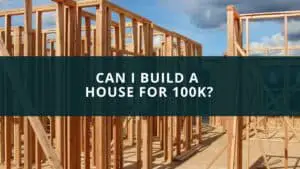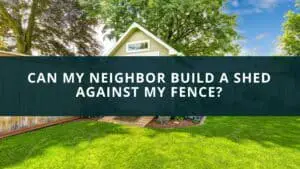Every country has its practices in housing, and Japan isn’t any different. If you’re thinking of moving here, it helps to know what homes in the country look like. So, do Japanese homes have backyards?
Japanese homes in major cities rarely have a backyard. This is due to the very limited space. But some have gardens. There are other factors such as natural disaster and weather that influences the construction of homes. But you can generally expect thin walls as most houses only last for 30 years.
Common elements of homes here include gated entries, tiled roofs, the prevalence of wood for construction, rooms serving multiple purposes, etc. Here, we discuss whether Japanese homes have backyards and all you need to know about residential construction in Japan.
Quick navigation
Construction of Homes in Japan
The structure of homes in Japan is quite different from what you’ll see in the US. Japanese homes don’t have several of the features that are common to homes in the US, such as cellars, basements, lofts, attic, etc. Instead of attics, they have an additional third floor with a room directly under the roof. Backyards are also not common here, but there are buildings with gardens. In recent times, a flat roof and terrace at the top are also common features of homes in this country. Japanese homes also feature quite thin walls that are about 3 inches or 10 cm. These hollow and easy to destroy walls exist to encourage more air circulation and prevent moisture accumulation. Paper walls are quite common here due to how hot it can be in the summer. Sliding doors and windows are common in older homes.
Another notable thing about housing in Japan is the presence of new houses. Unlike the US, where home values depend on how long they last, homes in Japan rarely last more than 30 years. This is due to the general opinion in the country that homes should last for only 30 years. In a way, this helps keep the country’s construction sector active. Japanese build their homes to last for just that long, and it shows in the limited insulation, simple design, and thin walls. But there are still homes that last for much longer.
Houses in Japan are usually small and close, even in rural areas. The construction of these homes ensures privacy, protects from the weather elements, and enables natural lighting. Single-family homes aren’t as popular in Japan compared to apartments. But even apartments have the traditional features of all homes
Factors Influencing Construction Practices in Japan
There are several factors responsible for the construction methods of homes in Japan, and that includes:
1. Space
In most major cities, it’s hard to find homes with a backyard due to lack of space. Homes in the country are much smaller than what you’ll find in the US. It’s not only a backyard that homes don’t have. It’s also uncommon to have found homes with garages. It’s only in the countryside that you’ll find homes that may have a yard and garage. The lot size is relatively small, making it difficult for people to include yards or garages.
2. Natural Disasters
The existence of natural disasters in the country has also influenced construction. Earthquakes are quite common here, and so are fires and tsunamis. In a way, this has affected the concept of ownership in the country. It’s not only homes that last for only a few decades; even the shrines last for only a few decades before rebuilding. Technological developments have also played a role in this. As technology improves, more earthquake-resistant standards are practices emerging. With the technology developing, the legal requirements for construction also constantly change, which means homes have to be demolished and rebuilt to meet new standards.
3. Weather
Japan experiences hot and humid torrential rains in the summer and autumn months. The heat here explains why most homes opt for thin walls to improve ventilation and construction. Roofs usually have wide eaves to prevent rain from getting indoors even when the door is open.
Elements of Traditional Japanese House Design
There are several features the traditional Japanese homes have, such as:
1. Gated Entries
Most homes in Japan have a property gate that delineates the home from the public space. In some places like Kyoto, it’s common to find a traditional roof gate that hides the residence and separates it from the street.
2. Tiled Roofs and Broad Eaves
It’s also to find broad eaves designed to drain rainwater away from the house, which means residents can open their exterior doors without being afraid of the rain entering the house while getting better ventilation.
3. Positioning of the House
Most houses in Japan have a north-south positioning. The main rooms face the south for steady sunlight, and the house might also have the views of an outdoor setting, most likely a garden. Whether single-family homes or apartments, it’s common for every house to access natural light.
4. Step-up Entry Ways
It’s also a culture in Japan not to wear outdoor shoes in the apartment. So, most homes have a transitional space called the genkan, where you can exchange your outdoor shoe for slippers. However, even slippers aren’t worn indoors, mostly due to the Tatami flooring that most homes have. Tatami is a woven mat that is a great insulator.
5. Wood
Although wood as a building material isn’t only particular to Japan, the country has a special reverence for wood. Japanese homes use the best wood for building, and most times, they’re not painted and are only stained at best. Japanese cypress is the most prestigious wood for construction.
6. Multipurpose Rooms and Furniture
Unlike the US, where most homes have specific rooms for specific purposes, most homes in Japan don’t. Flexibility is at the core of the Japanese household, and several rooms may serve several purposes, such as sitting, sleeping, and dining. Moveable furniture is quite common.
In Conclusion
Japanese homes rarely have a backyard, but you can find small gardens within buildings. The construction of these homes takes advantage of the natural environment. Of course, this mostly applies to traditional homes, and there are many high-rise apartments in major cities.



